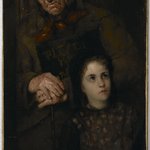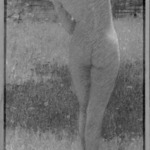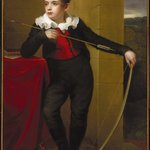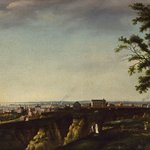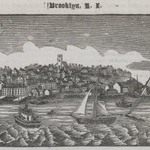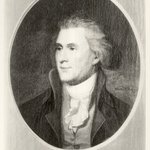
Mrs. David Forman and Child
Charles Willson Peale
American Art
On View: American Art Galleries, 5th Floor, Several Seats
The wife of a wealthy Continental Army officer and the mother of eleven children, Mrs. David Forman was portrayed by Charles Willson Peale in an interior that was meant to suggest the elegance and bounty of her domestic life. She sits on a chair with scrolling acanthus leaves, alluding to ancient Greek and Roman decoration. The presence of the landscape painting behind her signaled the cultured life of the Forman household, and the gently idealized curves of its composition offered a parallel to the sitter’s natural feminine beauty and grace.
MEDIUM
Oil on canvas
DATES
ca. 1785
DIMENSIONS
51 × 39 3/8 in. (129.5 × 100 cm)
frame: 56 × 44 1/2 × 2 1/2 in. (142.2 × 113 × 6.4 cm) (show scale)



SIGNATURE
Unsigned
COLLECTIONS
American Art
ACCESSION NUMBER
23.51
CREDIT LINE
Carll H. de Silver and Museum Collection Fund
PROVENANCE
ca. 1785, commissioned from the artist by David Forman and Ann Marsh Forman (Mrs. David Forman) of Monmouth County, NJ; 1798, inherited from Ann Marsh Forman by Malvina Forman of Fauquier County, VA; between 1876 and 1913, provenance not yet documented; before 1913, acquired by George Latham Fletcher of Virginia; May 6, 1913, purchased from George Latham Fletcher by M. Knoedler & Co., New York, NY; January 20, 1923, purchased from M. Knoedler & Co. by the Brooklyn Museum.
Provenance FAQ
EXHIBITIONS
MUSEUM LOCATION
This item is on view in American Art Galleries, 5th Floor, Several Seats
CAPTION
Charles Willson Peale (American, 1741–1827). Mrs. David Forman and Child, ca. 1785. Oil on canvas, 51 × 39 3/8 in. (129.5 × 100 cm). Brooklyn Museum, Carll H. de Silver and Museum Collection Fund, 23.51 (Photo: Brooklyn Museum, 23.51_PS20.jpg)
IMAGE
overall, 23.51_PS20.jpg. Brooklyn Museum photograph, 2024
"CUR" at the beginning of an image file name means that the image was created by a curatorial staff member. These study images may be digital point-and-shoot photographs, when we don\'t yet have high-quality studio photography, or they may be scans of older negatives, slides, or photographic prints, providing historical documentation of the object.
RIGHTS STATEMENT
No known copyright restrictions
This work may be in the public domain in the United States. Works created by United States and non-United States nationals published prior to 1923 are in the public domain, subject to the terms of any applicable treaty or agreement.
You may download and use Brooklyn Museum images of this work. Please include caption information from this page and credit the Brooklyn Museum. If you need a high resolution file, please fill out our online application form (charges apply).
The Museum does not warrant that the use of this work will not infringe on the rights of third parties, such as artists or artists' heirs holding the rights to the work. It is your responsibility to determine and satisfy copyright or other use restrictions before copying, transmitting, or making other use of protected items beyond that allowed by "fair use," as such term is understood under the United States Copyright Act.
The Brooklyn Museum makes no representations or warranties with respect to the application or terms of any international agreement governing copyright protection in the United States for works created by foreign nationals.
For further information about copyright, we recommend resources at the United States Library of Congress, Cornell University, Copyright and Cultural Institutions: Guidelines for U.S. Libraries, Archives, and Museums, and Copyright Watch.
For more information about the Museum's rights project, including how rights types are assigned, please see our blog posts on copyright.
If you have any information regarding this work and rights to it, please contact copyright@brooklynmuseum.org.
RECORD COMPLETENESS
Not every record you will find here is complete. More information is available for some works than for others, and some entries have been updated more recently. Records are frequently reviewed and revised, and we welcome any additional information you might have.







